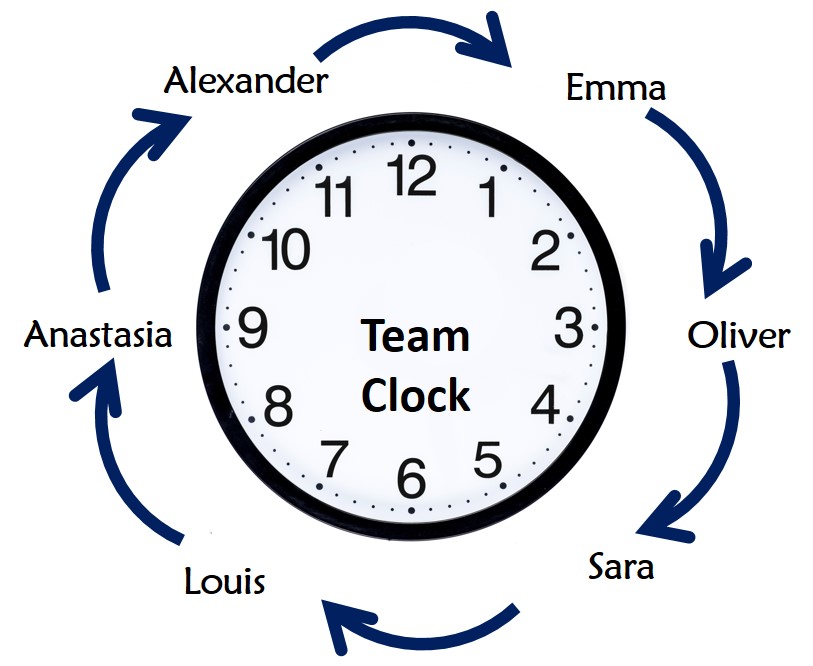People who work from a physical office space see and feel the culture of the company all around them. There are cues from the way people talk, the ways things look and the activity surrounding them. Because these are absent in a virtual team, virtual teams should pro-actively, explicitly and purposefully develop an e-culture. This process starts with the first get-together and continues throughout the entire teamwork. A positive team culture encourages team members to feel that they are visible, connected (virtually), respected and listened to.
A positive e-culture grows and evolves in the course of the team’s life cycle. It starts with an evaluation of the current situation with regard to team members' awareness of their own cultural diversity relative to other team members. Other initial steps involve the achievement of an understanding of the context in which the team works and the goals the team wishes to achieve. In order for this to be successful, the pro-active development of a team culture requires a general commitment to teamwork and openness.
In the following, examples of best practices are presented. All of these should give useful insights into how you might develop your own team e-culture.
Develop and commit to a communication charter
Specify mutually agreed guidelines on how the team will communicate with regard to communication styles, communication approaches and information flow. This could involve, for example, who passes on what to whom; a common understanding of how to address each other; who and how conference calls will be facilitated; who should be copied 'cc' in emails; and how a sense of togetherness in calls can be created
Specify which communication tools to use in which circumstances. This could regulate, for example, when to reply via email rather than picking up the phone. It is generally advisable to restrict the number of communication channels in order to ensure that everyone has access to them and can use them competently
Agree on communication technologies that fit the team and its working environment
Guide and assist participants in the use of the technologies chosen
Specify how to ensure sound knowledge sharing and documentation procedures. This could involve outlining good routines and rituals in this regard and might, for example, specify whether hand-overs should be completed daily and which software should be used to share documents
Clarify tasks and processes, not just roles and goals
Specify and ensure clarity about work processes, for example who does what and when; how information should flow, and who sends what to whom
Agree on areas which are non-negotiable and those which can be negotiated
Develop a common spirit and virtual closeness
Agree on how to ensure that everyone is ‘on-board’. For example, you may want to start every meeting with a check-in, asking team members how they are and how they are feeling
- Agree on how to ensure common meanings relating to the content and agreements reached at a meeting. You may, for example close with everyone just noting what they will take away from the meeting
- Specify actions that help to hold the team together, for example by communicating daily or integrating the work processes of various team members
- Decide on mechanisms that encourage both the giving and receiving of constructive feedback, e.g. by considering when feedback is most appreciated and when it is not, as well as which media might be perceived as most appropriate
- Agree on what a voicing culture entails and how best to apply it. This will include clarification of what and how exactly to voice in which situation
Specify how to ensure that everybody is being heard, e.g. by developing a team clock, an approach developed by Hildebrandt, Jehle, Meister, & Skoruppa (2013, p. 54)
A team clock

Clock image by OpenClipart-Vectors from Pixabay. Accessed 6 June 2021. Pixabay License
A team clock (Hildebrandt et al. 2013, p. 54) helps to structure airtime and also ensures that everybody's thoughts are being shared. Using the team clock you rotate and provide every team member with a specific speaking time. By doing so everybody knows when it is his or her turn to speak. A team clock is a good instrument to listen to different ideas and points of view and ensure that everybody is heard.
Establish a team rhythm
Be disciplined in creating and enforcing rhythms in virtual team work (e.g. by holding meetings regularly and establishing and sharing the meeting agenda in advance)
Ensure that there is enough time for socialising (e.g. by establishing a virtual water cooler or coffee break) to support the development of authentic human connections
A virtual coffee break

Photograph by Elena Martou
A virtual coffee break is a break during which time is intentionally allocated to low-fidelity activities such as chatting about personal issues, hobbies and family, or maybe films you have watched. You may also want to decide to have virtual coffee breaks to facilitate brainstorming and general reflection. The idea of a virtual coffee break is to compensate for the casual and informal talk people might have in a physical office space, thus contributing to a positive team spirit.